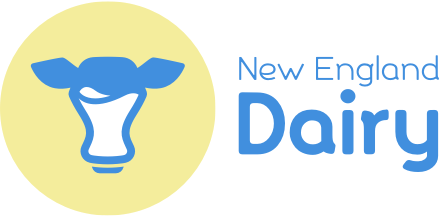
With so much information at our disposal, it may be difficult to determine what’s factual and what’s not regarding the production of cow’s milk. Misinformation is widespread, particularly regarding hormone and antibiotic use, which can unnecessarily call into question the safety of the nation’s milk supply.
Here are five facts that set the record straight on milk hormones and antibiotic use.
Fact: There are no added hormones in cow’s milk.
Hormones occur naturally in many foods, both plant and animal sourced. Bovine somatotropin (bST), for example, is a naturally occurring hormone in cows. At one point, dairy farmers used a synthetic version of this hormone (known as rbST) to increase milk production. Three decades of research by respected organizations like the World Health Organization and the Food and Drug Administration (FDA) have consistently affirmed that rbST is safe for human health. The FDA’s product safety information on rbST also notes that the hormone is not even absorbed by the body, since it is a protein and gets degraded by digestive enzymes in the gastrointestinal tract.
Market demand—not concerns regarding human health—led to rbST being gradually phased out of milk production.
Fact: There are no associations between hormones in milk and early-onset puberty.

The notion that there is a connection between hormones in milk and early puberty is not factually based. No scientific evidence supports this claim. Pediatric nutrition researchers point to the rising cases of childhood obesity as a likely reason for individuals entering puberty earlier. When part of a well-balanced dietary pattern, milk and other dairy products can actually help children maintain their weight while providing an array of essential nutrients that they need more of at their age, including calcium.
Fact: There are no antibiotics in milk.
Since 2011, not a single retail-ready milk product has tested for trace amounts of antibiotics. Reports of antibiotic residue in bulk milk tankers are reported annually.
Fact: The dairy industry closely monitors and tests for antibiotic use.
 The local and national dairy community prides itself on the prudent and responsible use of antibiotics in dairy animals. The National Dairy Farmers Assuring Responsible Management (FARM) Program provides resources and education on the responsible use of antibiotics for all U.S. dairy farmers, milk processors, and cooperatives. More than 99 percent of the U.S. milk supply comes from farms participating in the FARM Animal Care Program.
The local and national dairy community prides itself on the prudent and responsible use of antibiotics in dairy animals. The National Dairy Farmers Assuring Responsible Management (FARM) Program provides resources and education on the responsible use of antibiotics for all U.S. dairy farmers, milk processors, and cooperatives. More than 99 percent of the U.S. milk supply comes from farms participating in the FARM Animal Care Program.
FDA-approved medications (including antibiotics) are used by farmers to help control, prevent, and treat animal illnesses. However, if a cow requires antibiotics for treatment, dairy farmers must follow federal laws permitting milk collection for human use only after she is deemed healthy and the antibiotics have left her system. Prior to this timeframe, milk is discarded and never sold.
The FDA also requires testing of antibiotics upon milk’s arrival at the dairy processing plant. Each tanker of milk in the U.S. is tested for antibiotics. If milk tests positive for antibiotics, it is rejected by the plant and discarded and the farmer is financially responsible for the truckload of milk. Additional fines and possibly even revoking a farmer’s license to sell milk can occur if violations continue. Violations, however, are extremely rare.
Fact: The dairy industry is committed to lessening the need for antibiotics.
The dairy industry is working closely with national and international experts to protect animal health while lessening the reliance on antibiotics. The Veterinary Feed Directive Final Rule outlines the process for authorizing animal drugs intended for use in animal feed. The rule eliminates the use of antibiotics for production purposes (growth promotion and feed efficiency, for example) and permits them only for animal health purposes. Moreover, antibiotics can only be administered under the guidance of a veterinarian.



